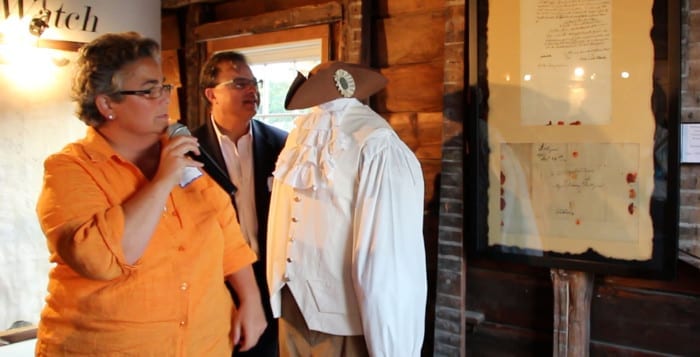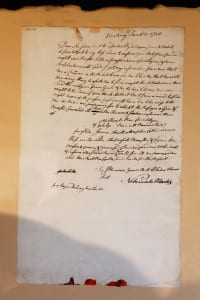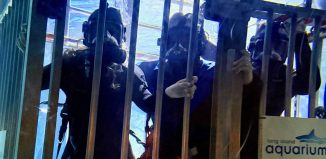Port Jeff finds its place in spy ring history

It was such a well-kept secret, it took more than 200 years to come to light.
Port Jefferson Village officials unveiled the newest historic addition to the Drowned Meadow Cottage museum last week: a letter that links Port Jefferson’s Roe brothers to then-Gen. George Washington’s Culper Spy Ring, which covertly worked to advance the rebel cause during the Revolutionary War.
Loyalist soldier Nehemiah Marks wrote the letter on Dec. 21, 1780, to inform his comrades that Phillips and Nathaniel Roe, among others, helped supply Setauket-based spy Caleb Brewster with information to pass on to the Patriots.

According to Mayor Margot Garant, a former Port Jefferson high school student found the letter two years ago while researching the Revolutionary spy ring at the University of Michigan and contacted the mayor. The next step was getting the letter authenticated.
“The authentication for this letter is so critical,” Garant said in an interview before last week’s event at the cottage, the former home of Phillips Roe. Villagers had long had suspicions that he and his brother were important “not only to village history but to the history of the Revolutionary War, and instrumental in the spy ring. That was kicked around as a rumor for many years and never authenticated.”
The Roe brothers came from modest means, according to Georgette Grier-Key, a historical consultant who authenticated the letter and designed its exhibit at the cottage. Their father, John Roe, was a shoemaker, but Phillips was more successful: He owned a wood business, as well as a ship. He used those resources to help to discreetly pass along information in the Culper Spy Ring.
But before the letter, some people doubted the area’s extensive involvement.
“There was some … organizations that didn’t really believe Port Jefferson had a claim to being part of the spy ring,” Grier-Key said. “Now we have [a] primary document source that says otherwise from a Loyalist perspective.”
The letter also links another North Shore neighborhood to the spy ring: Mount Sinai. Old Man’s Road is among the locations listed in the message, after a Patriot informant named James Smith was spotted receiving information there.

During a ribbon cutting and open house ceremony at the museum last week, Grier-Key said it is possible that towns farther east of Port Jefferson and Mount Sinai could have been a part of the ring too. For now, Garant said, the letter officially puts Port Jefferson and hamlets like Mount Sinai “on the map” for their involvement in the ring and their contribution to the war.
That recognition is reaching across Long Island — Michael Goudket, a program instructor from Raynham Hall Museum in Oyster Bay attended the event to show his support for the Drowned Meadow Cottage museum, saying there is a new sense of appreciation for the Island’s involvement in the Revolutionary War.
“People are starting to appreciate that even though Long Island doesn’t make the history books with big battles … we have the most interesting spy stories,” Goudket said.
The historic letter is on display at the museum alongside other documents, like Phillips Roe’s last will and testament and a list of individuals who still owed him money upon his death in 1792.
Those who were involved in the letter’s discovery and authentication hope to uncover more information about the spy ring.
This version corrects the exact date of Nehemiah Marks’ letter.






